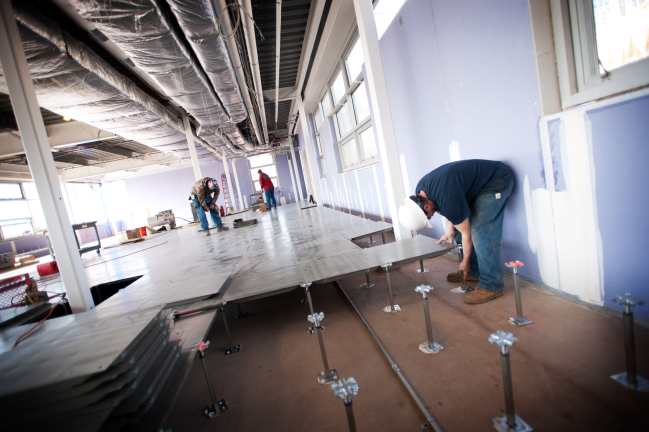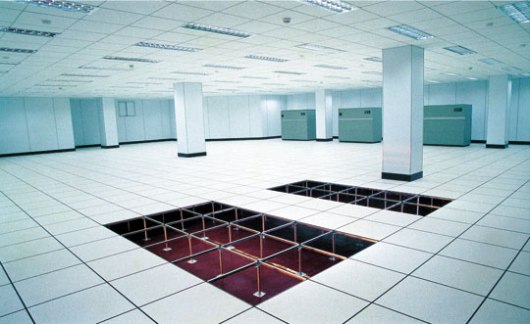Raised floor systems, also commonly called a raised computer access flooring system, is a complex and sophisticatedly designed computer room that’s intended to house server arrays that are typically prone to overheating. The heating issues aside, which is generally a primary emphasis on raised flooring, they offer a number of other benefits that also include ease of access and maintenance. This raised flooring system design has been in place since the 1970s, according to Wikipedia.org, and was initially designed to facilitate a greater passage of cold air underneath the actual server arrays. The original design utilized what is called a plenum chamber, which is basically a fancier term for an under floor air duct. The design was created so that cold air could be pushed under the floor, as well as into the rest of the room, to act as a more efficient means of cooling. In most instances, special tiles are also placed in the room as to better direct the passage of any cold air introduced to the room, and direct that colder air to the computer arrays to better prevent overheating. Now that you are aware of their purpose, learn about a few benefits these systems offer that you may not have known about prior.

This blog is powered by seo services jaipur
Easier Maintenance: When dealing with complex and crowded arrays of servers, otherwise called the “cloud” by many, it can be nearly impossible to perform maintenance if they are not properly organized. Think of these systems also as a means by which you can keep your servers better organized. With easy access ports and properly laid cabling, accessing and maintain the computer systems is made far more feasible and convenient for technical supervisors and staff.
Fewer Instances of Overheating: The entire goal of these raised systems is to ensure that the servers are not prone to overheating, which can cause maintenance issues, hardware failure and disruptions in service. Instead, they are more efficiently cooled from top to bottom, quite literally, with a unique design that ensures that the efficacy of the integral server array is never compromised by heat.
Disaster Recovery Plan: Most server tower storage solutions are void of a disaster recovery plan. However, newer designs of these systems also include that option. They can be placed in a more secure room with a backup power source to keep them cool and functioning in the event of a disaster, thus preserving data integrity during a time of emergency.
Static-Free (Clean) Room: Many server rooms are dubbed as clean rooms because they cannot induce rampant or fleeting static charges whatsoever. Static charges can fry the inner and sensitive components of computer servers. Specially designed rooms of this type feature special static prevention devices, including tiling and paint and absorbers, to help preserve the computer systems at all time.
Preserved Investment: Protecting computer systems that are vital to business operations also serves to safeguard the corporate investment. Many ecommerce entities are out of business if they are not able to provide online services to eager customers. These systems also serve as a way to protect the core, or heartbeat, of any operation that’s heavily reliant upon server to client interaction.



